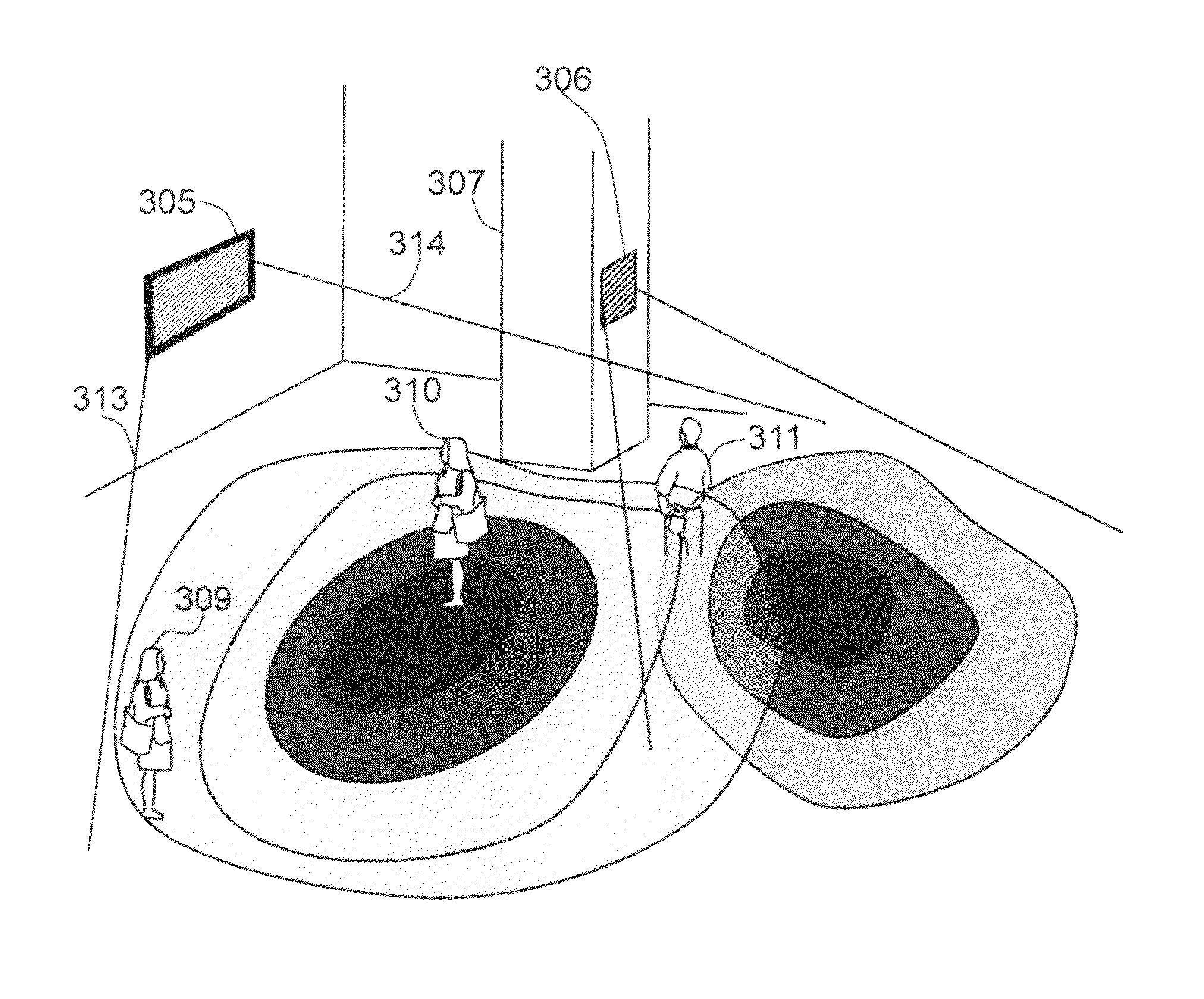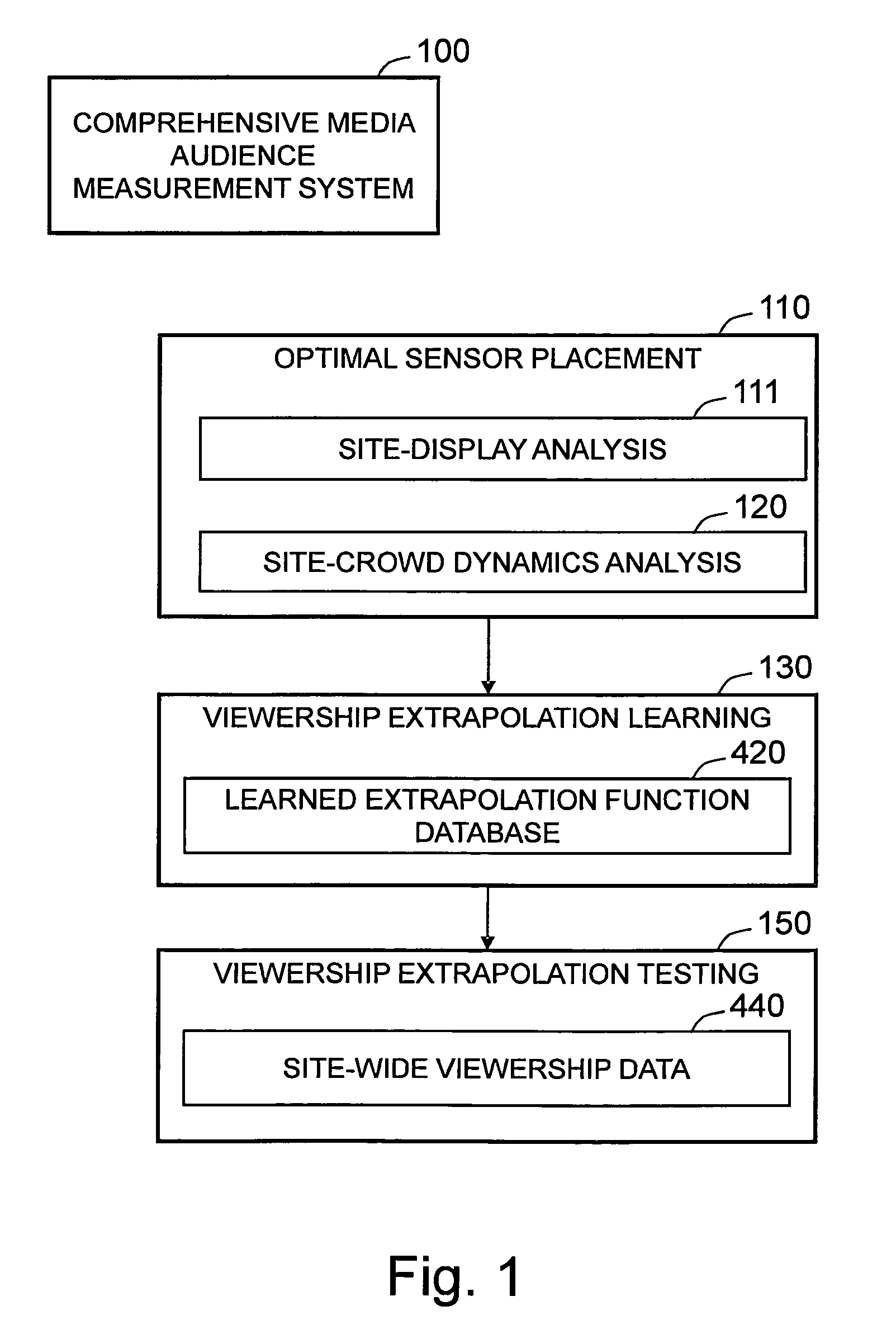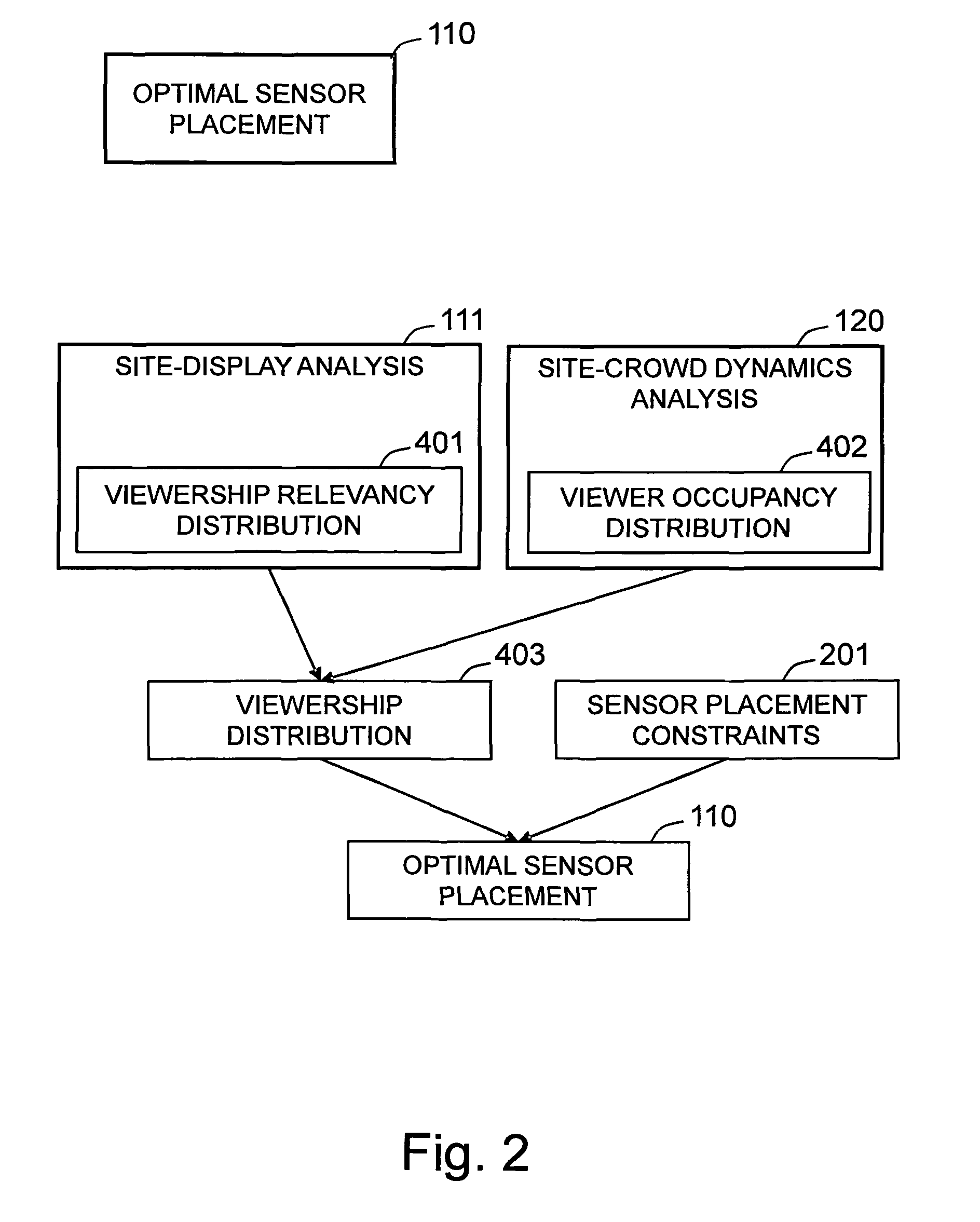Method and system for media audience measurement by viewership extrapolation based on site, display, and crowd characterization
a viewership and extrapolation technology, applied in the field of media audience measurement by viewership extrapolation based on site, display, crowd characterization, can solve the problems of difficult to take audience surveys, high cost of human intervention, and high potential bias of on-site interviews
- Summary
- Abstract
- Description
- Claims
- Application Information
AI Technical Summary
Benefits of technology
Problems solved by technology
Method used
Image
Examples
Embodiment Construction
[0049]FIG. 1 is an overview of the comprehensive media audience measurement system 100, which consists of three major steps: (1) optimal sensor placement 110, (2) viewership extrapolation learning 130, and (3) viewership extrapolation testing 150. The goal of this invention is that given a set of sensors (i.e., the means of capturing images) placed in the site that may not be able to observe the entire media audience of the target display, we want to estimate the entire media audience of the target display by extrapolating the media audience partially sampled only within the sensing ranges of the sensors. We will refer to the media audience of a particular display as the viewership of the display in a form of a feature set, which may include head-count, dwell time, attention time, and demographic information such as gender and age of viewers of the display. To accomplish the goal of estimating the site-wide viewership, we first introduce a method that can optimally place sensors in ...
PUM
 Login to View More
Login to View More Abstract
Description
Claims
Application Information
 Login to View More
Login to View More - R&D
- Intellectual Property
- Life Sciences
- Materials
- Tech Scout
- Unparalleled Data Quality
- Higher Quality Content
- 60% Fewer Hallucinations
Browse by: Latest US Patents, China's latest patents, Technical Efficacy Thesaurus, Application Domain, Technology Topic, Popular Technical Reports.
© 2025 PatSnap. All rights reserved.Legal|Privacy policy|Modern Slavery Act Transparency Statement|Sitemap|About US| Contact US: help@patsnap.com



